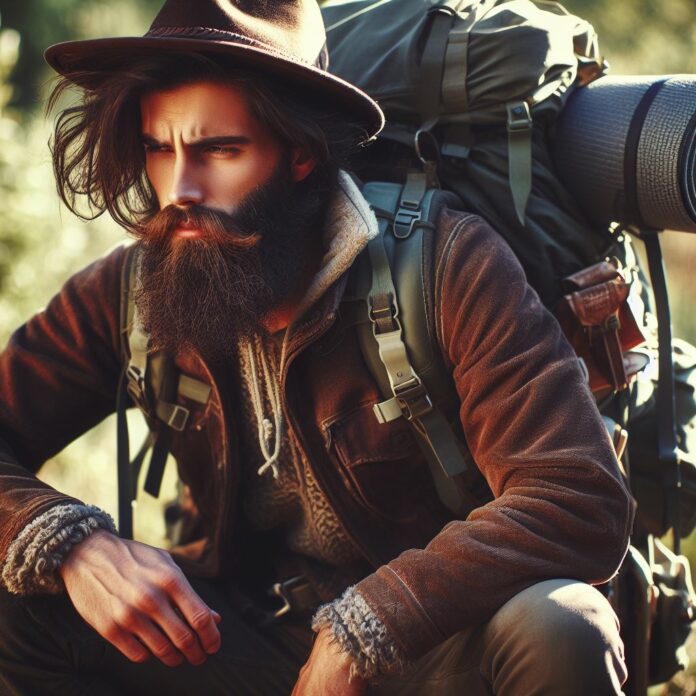Wearing the right clothing is crucial for an enjoyable and safe outdoor adventure. Whether you’re hiking, camping, or participating in any outdoor activity, being prepared with appropriate attire is essential.
When considering what to wear on an outdoor adventure clothing, several factors come into play. In particular, you need to consider the weather conditions, the level of activity you’ll be engaging in, and the duration of your adventure.
These factors heavily influence the clothing choices you make to ensure comfort and protection throughout your outdoor journey.
Choosing the right fabrics is also crucial when selecting your outdoor clothing. Look for moisture-wicking fabrics that draw sweat away from your body, breathable fabrics that allow airflow, insulating fabrics to keep you warm, and waterproof and windproof fabrics to protect you from the elements.
Layering your clothing is an effective way to adapt to changing temperatures and weather conditions. It allows you to add or remove layers as needed to maintain optimal body temperature throughout your adventure.
In addition to clothing, there are other considerations to keep in mind. Sun protection is vital, so don’t forget to wear sunscreen, sunglasses, and a hat. Insect protection is also important, especially in areas prone to bugs and mosquitoes.
Lastly, prioritize safety and visibility by wearing reflective gear or bright colors, particularly if you’ll be in areas with low visibility or during nighttime activities.
Considerations for Outdoor Clothing

When it comes to your outdoor adventure, choosing the right clothing is crucial. In this section, we’ll uncover the key considerations for your outdoor clothing. From understanding the weather conditions to matching your gear with your activity level and duration of the adventure, we’ll equip you with the knowledge you need to make confident decisions.
So, grab your gear and let’s dive into the world of outdoor clothing!
Weather Conditions
When planning an outdoor adventure, considering the weather conditions is crucial for dressing appropriately. Here is a list of factors to consider:
- Temperature: Take note of the temperature range you will be facing. Dress in layers to adjust to temperature fluctuations throughout the day.
- Precipitation: Check the forecast for rain or snow. Pack waterproof and breathable outer layers to keep yourself dry.
- Wind: Windy conditions can affect how cold it feels. Dress in wind-resistant layers to stay warm.
- Sunshine: If it’s a sunny day, protect yourself from harmful UV rays by wearing sunscreen, a hat, and sunglasses.
Fact: Did you know that weather conditions can greatly impact outdoor activities? Extreme heat can lead to dehydration, while cold temperatures can increase the risk of hypothermia.
It’s important to dress appropriately to prevent these risks and enjoy your outdoor adventure to the fullest.
Activity Level
When considering what to wear on an outdoor adventure, it’s important to take into account the activity level in order to choose appropriate clothing that will provide comfort and functionality. Here are some factors to consider:
- Intensity: If the activity level involves high-intensity exercises such as hiking, running, or cycling, opt for lightweight and breathable clothing that allows for freedom of movement. Look for moisture-wicking fabrics that will keep you dry and comfortable.
- Duration: For shorter activities, you may be able to wear lighter clothing, whereas longer adventures may require more layers to accommodate changes in temperature. Layering allows you to adjust your clothing as needed throughout the day.
- Terrain: Consider the terrain you will be traversing. If there are rugged or uneven surfaces, consider wearing clothing that provides protection from scrapes and abrasions. Additionally, choose footwear with good traction to prevent slipping.
- Weather conditions: The activity level will also influence the type of clothing you should wear depending on the weather conditions. If it’s hot and sunny, lightweight and breathable clothing will help keep you cool. On the other hand, colder temperatures require layering with insulating materials to retain warmth.
- Comfort: Ultimately, choose clothing that allows you to move freely and comfortably during your chosen activity level. It’s essential to wear clothing that does not restrict your range of motion and that you feel comfortable in for an extended period of time.
Duration of the Adventure
When considering the duration of your outdoor adventure, it is important to choose appropriate clothing that will keep you comfortable and protected throughout the entire trip.
- Layering: Opt for a layering system that allows you to adjust your clothing based on changes in weather or activity level.
- Base Layer: Start with a moisture-wicking base layer that helps regulate your body temperature and keeps you dry.
- Insulating Layer: Depending on the anticipated temperatures, choose an insulating layer that provides warmth without adding excessive bulk.
- Outer Layer: Your outer layer should be waterproof and windproof to shield you from rain, snow, and strong winds.
Pro-tip: For longer adventures, consider packing extra base and mid-layers that can be easily swapped out for a fresh and comfortable outfit, especially if you won’t have access to laundry facilities during your trip.
Additionally, check the weather forecast for your entire duration and pack accordingly to ensure you are prepared for any changes in conditions.
Essential Clothing Items for Outdoor Adventures
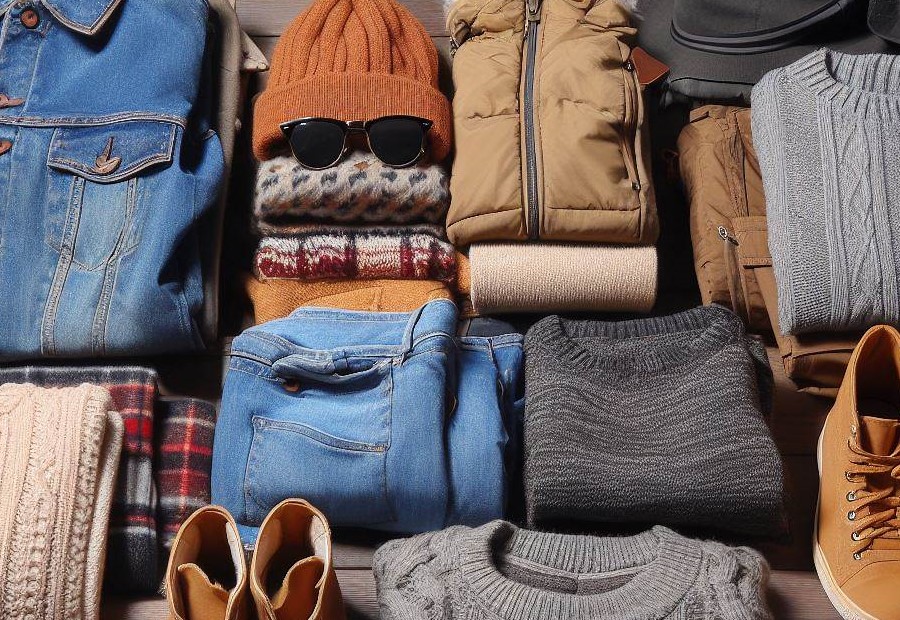
Gear up for your next outdoor adventure with the essential clothing items you need. We’ll be diving into the world of outdoor apparel, focusing on the base layer, insulating layer, and outer layer.
From moisture-wicking properties to insulation and protection from the elements, each sub-section will uncover the benefits of these clothing layers, ensuring you’re prepared for whatever nature throws your way.
Get ready to optimize your outdoor experience with the right gear.
Base Layer
The base layer is an essential component of outdoor clothing. It is the layer of clothing that is in direct contact with your skin. Its primary role is to keep you dry and comfortable by wicking away moisture from your body.
When choosing a base layer, opt for fabrics that are moisture-wicking and breathable. These fabrics, such as merino wool or synthetic materials, are designed to quickly move sweat away from the skin to the outer layers of clothing where it can evaporate.
A good base layer should also provide insulation, helping to regulate your body temperature. It should be snug but not restrictive, allowing for ease of movement.
Base layers come in various weights, ranging from lightweight for warmer conditions to heavyweight for colder temperatures. The weight you choose will depend on the weather conditions and the activity level of your outdoor adventure.
Remember to layer your clothing correctly, starting with a base layer, followed by an insulating layer and an outer layer. This layering system allows for easy adjustments based on changing weather conditions and activity levels.
The use of base layers in outdoor clothing can be traced back to ancient civilizations. In cold regions, people would wear close-fitting garments made of animal skins as a base layer to provide warmth and protection from the elements.
Over time, advancements in textile technology have led to the development of modern base layers that offer superior moisture-wicking and insulation properties.
Today, base layers are an indispensable part of outdoor gear, ensuring comfort and performance in various outdoor activities.
Insulating Layer
The insulating layer is a crucial component of outdoor clothing that plays a vital role in regulating body temperature in various weather conditions. When choosing the insulating layer, there are several key factors to take into account:
- Material: It is important to select an insulating layer made of high-quality materials like fleece, down, or synthetic fibers that are known for their exceptional heat retention properties.
- Thickness: The level of insulation required depends on the weather conditions. For colder temperatures, a thicker insulating layer will provide more warmth, whereas a lighter one will suffice for milder climates.
- Weight: Look for lightweight insulating layers that offer warmth without unnecessary bulk or added weight to your attire.
- Moisture-wicking: Consider getting an insulating layer that has moisture-wicking capabilities, as this will help keep sweat away from your body, preventing you from feeling damp and cold.
- Layering: The insulating layer should be designed to be worn over a base layer and under an outer layer, allowing for easy layering and adaptability in different environments.
- Fitting: Opt for an insulating layer that fits well and allows for freedom of movement without being too tight or restrictive.
By taking these factors into consideration, you will be able to choose the appropriate insulating layer that will keep you warm and comfortable during your outdoor adventures.
Outer Layer
The outer layer of clothing is essential for protecting you against external elements such as rain, wind, and snow. It acts as a barrier between you and the weather conditions. When selecting the outer layer, take into account the following:
1. Waterproof: Look for outer layers made from waterproof fabrics to keep you dry during wet conditions. Materials like Gore-Tex or event are highly effective in repelling water.
2. Windproof: Ensure that the outer layer has windproof properties to shield you from cold winds. Windproof materials help maintain your body heat and prevent wind chill.
3. Breathable: Opt for outer layers that are breathable to allow moisture and sweat to escape. This prevents you from feeling damp and uncomfortable during physical activity.
4. Layering: Consider the ability to layer underneath the outer layer. This enables you to adjust your clothing according to changing weather conditions and activity levels.
5. Functionality: Look for features such as adjustable hoods, cuffs, and pockets that enhance the functionality of the outer layer and provide convenience during outdoor adventures.
Remember to choose an outer layer that suits the specific outdoor activity you will be engaging in, such as hiking, skiing, or camping. Additionally, ensure that the outer layer fits well and provides freedom of movement.
Dressing appropriately with a suitable outer layer will keep you comfortable and protected on your outdoor adventures.
Footwear

When gearing up for an outdoor adventure, having the right footwear is essential for comfort and protection. Here are some options to consider:
- Hiking boots: These provide ankle support and durability for rugged trails and uneven terrain.
- Trail running shoes: Lightweight and flexible, these are great for quick hikes and running on moderate trails.
- Sandals: For trips to the beach or water activities, sandals offer breathability and quick-drying properties.
- Water shoes: Designed specifically for water activities like rafting or kayaking, these shoes have excellent grip and drainage.
- Approach shoes: Ideal for rock climbing or technical hikes, these shoes have sticky rubber soles for better grip on rocks.
Consider your activity and the terrain you’ll be encountering when choosing your footwear. If you’re going hiking on steep and rocky trails, opt for hiking boots or approach shoes. For more casual adventures or water activities, sandals or water shoes may be more suitable.
It’s important to prioritize comfort and functionality to ensure an enjoyable outdoor experience.
Headwear
When planning for an outdoor adventure, it is important to consider headwear. Headwear provides both protection and comfort in different weather conditions. Here are some options to consider:
- Sun Hat: This wide-brimmed hat with UPF protection is designed to shield your face and neck from the sun’s harmful rays.
- Beanie: Made of warm and insulating materials like wool or fleece, this snug-fitting hat keeps your head and ears warm in cold weather.
- Baseball Cap: A classic cap with a curved brim that offers shade for your eyes and face. This type of headwear is great for casual outings or activities.
- Boonie Hat: Made of lightweight and breathable fabric, this wide-brimmed hat is perfect for outdoor activities such as hiking or fishing.
- Headband: Worn around the forehead, this thin band keeps sweat away from your eyes and provides some warmth without covering your entire head.
In ancient times, headwear served various purposes beyond protection. For instance, the Phrygian cap symbolized liberty for freed slaves in ancient Rome. In medieval Europe, knights wore helmets adorned with feathers or crests to distinguish themselves in battle.
Throughout history, headwear has evolved to reflect cultural customs, social status, and fashion trends.
Accessories
When embarking on an outdoor adventure, having the right accessories is crucial to enhance your experience and ensure preparedness. Here are some must-have accessories to consider:
- A sturdy backpack: An essential item to help you carry and organize all your supplies.
- A reliable water bottle: Stay hydrated by investing in a durable water bottle that can withstand the demands of outdoor conditions.
- A compass: An invaluable tool that makes navigating through unfamiliar terrain much easier.
- A multi-tool: Be ready for any situation with a versatile multi-tool that includes a knife, screwdriver, and other useful tools.
- A headlamp: Keep your hands free while exploring by wearing a headlamp to illuminate your path.
- Proper footwear: Choose comfortable and sturdy shoes or boots that provide excellent traction on various terrains.
- Sun protection: Remember to pack essential items such as a hat, sunglasses, and sunscreen to shield yourself from harmful UV rays.
- A lightweight and waterproof jacket: Be prepared for changing weather conditions with a jacket that can protect you from rain or wind.
- A first aid kit: It’s always wise to carry a compact first aid kit with essential supplies in case of unexpected accidents.
Choosing the Right Fabrics
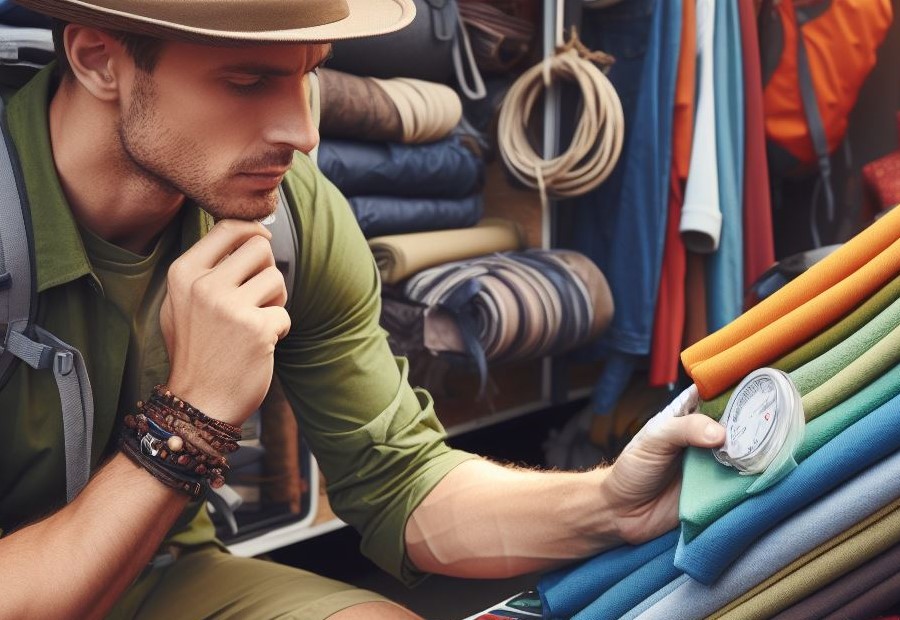
Choosing the right fabrics for your outdoor adventure can make all the difference in your comfort and performance. From moisture-wicking fabrics to breathable, insulating, waterproof, and windproof options, each sub-section in this article will uncover the benefits of these fabric choices.
Whether you’re hiking, camping, or engaging in any outdoor activity, understanding the properties of these fabrics will help you stay dry, comfortable, and protected throughout your adventure.
Moisture-Wicking Fabrics
When venturing into the great outdoors, it’s important to have moisture-wicking fabrics that keep you both dry and comfortable. Consider the following types:
- Polyester: A highly effective and commonly used moisture-wicking fabric that efficiently pulls moisture away from your skin and promotes quick evaporation.
- Nylon: Another excellent choice for moisture-wicking due to its durability, lightweight nature, and quick drying properties.
- Merino wool: Although not a synthetic fabric, merino wool is renowned for its ability to wick away moisture while keeping you warm and dry.
- Blends: Many moisture-wicking fabrics consist of a blend of materials such as polyester and spandex. These blends provide both moisture-wicking capabilities and stretch for enhanced comfort and mobility.
When selecting outdoor clothing, prioritize garments made from these moisture-wicking fabrics. They will effectively regulate your body temperature and prevent sweat from lingering on your skin, reducing the risk of discomfort and chafing.
Remember to avoid cotton, as it tends to retain moisture rather than wick it away. Investing in high-quality moisture-wicking clothing significantly enhances your outdoor experience, keeping you feeling fresh throughout your adventures.
Breathable Fabrics
When it comes to outdoor adventures, selecting the appropriate clothing is crucial. Breathable fabrics play a vital role in this regard as they allow moisture to escape, ensuring comfort during physical activities. Here are some examples of breathable fabrics:
- Nylon: Nylon, a synthetic fabric, is renowned for its durability and breathability. It is commonly utilized in activewear due to its ability to wick away sweat and facilitate air circulation.
- Polyester: Another synthetic fabric, polyester, is frequently found in outdoor clothing. Its lightweight nature, quick-drying properties, and breathability make it ideal for activities that induce sweating.
- Merino wool: Merino wool, a natural fiber, is exceptional at regulating body temperature. It offers high breathability and features moisture-wicking properties, making it an excellent choice for outdoor activities in diverse weather conditions.
- Mesh: Mesh fabrics are often incorporated into garments such as jackets and shirts to provide ventilation. They enable unrestricted airflow, keeping you cool and comfortable during strenuous activities.
By opting for clothing made from breathable fabrics, you can guarantee that you remain cool and dry throughout your outdoor adventure. These fabrics will prevent overheating and the accumulation of moisture, thereby enhancing your overall comfort.
Insulating Fabrics
- Wool: Wool is an insulating fabric that is highly effective for outdoor adventures. It possesses natural thermoregulatory properties and can effectively retain warmth, even when wet. Many people choose merino wool for its softness, breathability, and resistance to odors.
- Fleece: Fleece is a synthetic fabric that provides excellent insulation. It is known for being lightweight, quick-drying, and proficient at trapping heat. Fleece jackets, sweaters, and pants are commonly utilized as insulating layers.
- Down: Down refers to the fluffy layer found beneath the feathers of ducks and geese. It offers exceptional warmth, as well as being lightweight and easily compressible. Down jackets and vests are popular choices for cold weather conditions.
- Synthetic Insulation: Synthetic insulation materials like PrimaLoft and Thinsulate replicate the warming properties of down while maintaining insulation even in wet conditions. This makes them ideal options for activities or environments with moisture.
When selecting insulating fabrics, it is important to consider the temperature range, level of activity, and likelihood of exposure to moisture. Layering different insulating fabrics allows for versatility in adapting to changing weather conditions.
It is crucial to choose breathable fabrics to prevent overheating and moisture buildup. Additionally, ensuring proper insulation and freedom of movement by paying attention to the garment’s fit is paramount.
With the right insulating fabrics, you can remain warm and comfortable during your outdoor adventures.
Waterproof and Windproof Fabrics
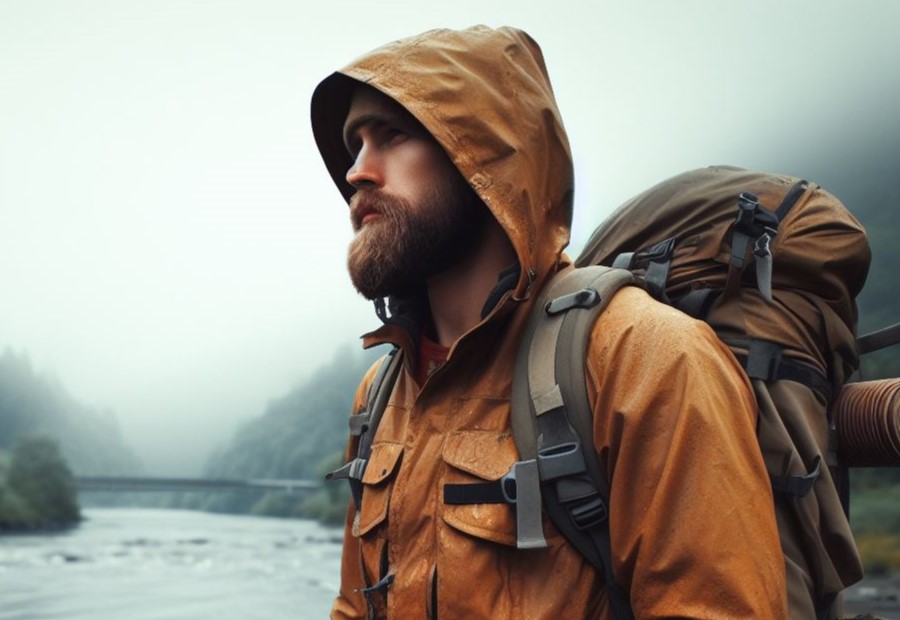
- Waterproof and windproof fabrics are essential for outdoor adventures, as they offer protection against rain, snow, and strong winds.
- Gore-Tex is a well-known and popular fabric that is both waterproof and windproof. Additionally, it is highly breathable and durable.
- Event, Pertex, and Polartec NeoShell are other types of fabrics that are waterproof and windproof.
- These fabrics contain a waterproof membrane that prevents water from seeping in while allowing moisture to escape.
- They are specifically designed to keep you dry and comfortable in wet and windy conditions.
- Waterproof and windproof fabrics are commonly used in outer layers of apparel, such as jackets and pants.
- When selecting outdoor clothing, make sure to choose garments that are made with these waterproof and windproof fabrics.
- By doing so, you will enjoy excellent protection against the elements, ensuring that you stay dry and warm during your adventures.
- Keep in mind that while these fabrics are highly effective, they may have a higher price point compared to regular fabrics.
- However, it is worth investing in high-quality waterproof and windproof clothing due to the added comfort and protection they provide.
Additional Considerations
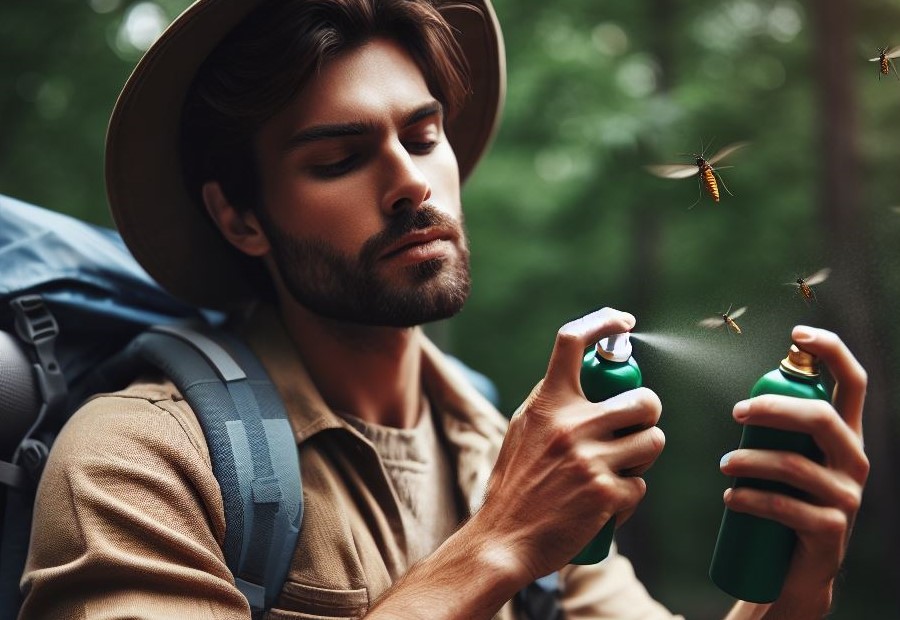
When heading out for an outdoor adventure, it’s crucial to consider certain factors beyond just the right outfit. In this section, we’ll explore some key additional considerations that can greatly enhance your experience.
From ensuring proper sun protection and defending against insects to prioritizing safety and visibility, we’ll dive into the various sub-sections and equip you with the knowledge you need to maximize your enjoyment and safety in the great outdoors.
So let’s gear up and delve into these essential extras!
Sun Protection
When heading out for an outdoor adventure, it is crucial to prioritize sun protection in order to shield your skin from the harmful effects of the sun. Here are some important factors to consider for effective sun protection:
1. Sunscreen: Before going outside, make sure to apply a high SPF (Sun Protection Factor) broad-spectrum sunscreen. This will provide a safeguard against the sun’s harmful UV (Ultraviolet) rays.
2. Protective Clothing: To minimize sun exposure, opt for clothing that covers your arms and legs. Choose lightweight and breathable fabrics with a tight weave for enhanced sun protection. Additionally, consider wearing dark colors and long sleeves for added shield.
3. Wide-brimmed Hat: Wearing a hat with a wide brim is essential as it provides shading for your face, ears, and neck – areas that are more susceptible to sunburn.
4. Sunglasses: Invest in a pair of sunglasses that offer 100% UV protection. By doing so, you can effectively shield your eyes from the damaging rays of the sun and reduce the risk of eye damage.
Remember, sun protection is necessary regardless of the weather conditions. Even on cloudy days, UV rays have the ability to penetrate the clouds and cause skin damage. It is crucial to reapply sunscreen throughout the day, particularly after swimming or sweating.
Pro-tip: Along with sunscreen, consider utilizing physical barriers like a UV-protective umbrella or seeking shade during the peak hours of the day when the sun’s rays are the strongest.
Insect Protection
When planning for an outdoor adventure, insect protection is an important consideration to ensure a comfortable and enjoyable experience. Here are some key factors to consider:
- Repellents: Insect repellents are essential for keeping pests away. Look for ones containing ingredients like DEET or picaridin, which are effective against a wide range of insects.
- Covered clothing: Wearing long-sleeved shirts, long pants, and socks can help prevent insects from biting exposed skin. Opt for lightweight, breathable fabrics to stay cool.
- Headwear: Wide-brimmed hats and caps with mosquito netting can provide protection for your face, neck, and head from biting insects.
- Proper footwear: Wear closed-toe shoes or boots to prevent insects from reaching your feet. Tucking your pants into your socks can also help keep bugs out.
- Choosing the right time: Avoid outdoor activities during peak insect activity times, such as dawn and dusk, when mosquitoes and other biting insects are most active.
- Environmental modifications: Reduce standing water around your camping area to minimize the breeding grounds for mosquitoes. Consider using mosquito nets or screens on windows and doors.
By considering these factors and taking necessary precautions, you can protect yourself from insects and enjoy your outdoor adventure to the fullest.
Safety and Visibility
To ensure your safety and visibility during an outdoor adventure, consider the following:
- Reflective clothing: Wear clothing with reflective strips or patches to make yourself more visible, especially when hiking or biking near roads.
- Bright colors: Opt for clothing in bright, vibrant colors that can be easily seen from a distance. This increases your visibility to other outdoor enthusiasts and potential rescuers.
- Headlamp or flashlight: Always carry a headlamp or flashlight, even if you don’t plan on being out after dark. It can help you navigate safely and be seen by others in case of emergencies.
- Whistle: Keep a whistle with you at all times. It’s a simple and effective way to alert others if you need help or are in a dangerous situation.
Fact: Wearing reflective clothing can increase your visibility by up to 500 feet, significantly reducing the risk of accidents and improving safety and visibility during outdoor activities.
Frequently Asked Questions
What are the key differences between clothing designed for everyday use and clothing designed for outdoor activities?
Clothing designed for outdoor activities is specifically tailored to meet the demands of sports, physical activity, or outdoor expeditions. This type of clothing prioritizes safety, functionality, and comfort. It typically features performant fabrics that are lightweight, breathable, quick-drying, and abrasion-resistant.
Additionally, outdoor clothing often includes features like non-slip soles on shoes for better grip, waterproof jackets to protect against rain, and hats or caps for sun protection. In contrast, everyday clothing focuses more on style and may not provide the same level of performance and durability required for outdoor activities.
What is the three-layer principle and why is it important when dressing for outdoor activities?
The three-layer principle is a method of dressing for outdoor activities that involves wearing three different layers to manage body temperature and moisture. The base layer, worn next to the skin, should be moisture-wicking and insulating.
The middle layer provides insulation and helps retain heat, while the outer layer (shell or rain jacket) protects against wind, rain, and snow. This layering system allows for adjusting clothing according to changing weather conditions or activity levels.
It is important because it helps regulate body temperature, keeps you comfortable, and prevents overheating or chilling.
What should I wear for climbing volcanoes or remote expeditions?
When embarking on climbing volcanoes or remote expeditions, it is essential to dress appropriately for the challenging environments. Dress in multiple warm layers, including wool underwear, a wool jersey with long sleeves, a thick fleece as a mid-layer, and a windproof vest or jacket.
On top of these layers, a shell jacket in Gore-Tex or a similar material is recommended for its waterproof and windproof properties. For the lower body, wear wool innerwear, long johns or fleece pants, and wind stopper or Gore-Tex pants. Don’t forget to protect your hands with gloves suitable for cold weather.
Sturdy footwear is also crucial for traversing difficult terrains. Be well-prepared and consult experienced guides or agencies for specific clothing recommendations based on your climbing or remote expedition plans.
How can I save money when choosing clothing for outdoor activities?
When it comes to choosing clothing for outdoor activities, there are ways to save money without compromising on quality. First, consider purchasing versatile pieces that can be used for multiple activities and in different weather conditions.
Look for sales or discounts and consider buying off-season when prices are lower. Another option is to explore second-hand or rental gear shops for outdoor clothing and equipment.
Additionally, consider investing in durable, high-quality items that will last longer and save you money in the long run, rather than continuously replacing cheaper, less durable options.
What clothing is recommended for bug protection during outdoor activities?
When participating in outdoor activities, bug protection is often important for comfort and safety. To protect yourself from insects, such as midges, it is recommended to wear long-sleeved tops and long trousers made from lightweight and breathable materials.
Additionally, using insect repellent on exposed skin can help deter bugs. It is also a good idea to bring along a hat and a buff or headband to protect your head and neck from insects. Taking these precautions will help ensure an enjoyable outdoor adventure without being bothered by bugs.

